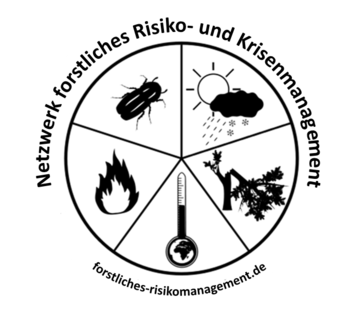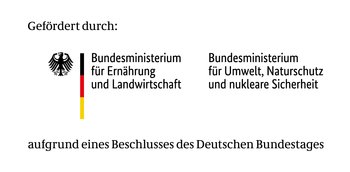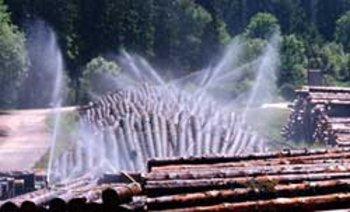Water extraction
- Local/regional/national regulations and laws on water extraction have to be observed when planning a wet storage site.
- Water is usually extracted from rivers and streams, less frequently from standing water bodies or ground water.
- The target value of 1 litre per second per 1,000 cubic metres of wood is the lower limit of actual water demand. In principle, the demand should be calculated higher to achieve a continuous and sufficient irrigation, especially where construction did not strictly follow the guidelines. Low water levels in summer have to be taken into account.
Standing water bodies
The following points should be considered where water is extracted from standing water bodies:
- The water level must not be subject to major fluctuations.
- A sewer helps to isolate the water aspiration port.
- The submerged pump has to be securely attached.
Flowing water bodies
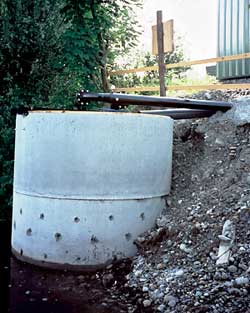
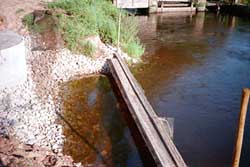
Pic. 2+3: Extraction sewer – lined with coarse gravel. Photos R. Willmann
- Data on year-round water supply is needed to calculate wet storage capacity. Water demand has to be satisfied even when the water level is low. The remaining amount of water in the water body has to be considered.
- Water extraction must not exceed one third of the average low level water quantity.
- Extraction sewers are recommendable to ensure sufficient water supply even during low water levels. The suction pipe and aspiration port need to be protected from being washed away. Pollution of the water by suspended matter has to be avoided. The bottom of the sewer needs to be 1-1.5 metres below the riverbed and at least 1.5 metres in diameter. Perforated pit rings are mounted onto the closed-ended bottom ring. The sewer is then lined with coarse gravel on the outside.
- Filter baskets also protect the pump against dirt.
- Construction of a reservoir can help balance minor fluctuations of the water level and ensure better water supply.
- During times of insufficient water supply from the river, the run-off from the stacks can be collected in ditches and directed to another reservoir below the storage site. From here, it can be pumped back to the upper reservoir.
Using ground water
In principal, water can be extracted from ground water (if the water table is high). Depending on the water table, a 4-5 metre deep hole is dug and the water accumulation checked. Where appropriate, an extraction sewer (analogue to the one described for flowing water bodies) can be installed.
Systems using gravitational force
With a sufficient gradient, an irrigation system can be powered by force of gravity. The required pressure is gained from the difference in elevation of the water body and the storage site. 10 metres difference in elevation create a pressure of 1 bar. Considering a minimum required pressure at the sprinklers and friction loss in the pressure pipe, the difference in elevation should be at least 30 metres water column to ensure failure-free operation. Where the difference - and with it the pressure – is higher, a pressure reducer or a safety valve might be necessary to regulate the pressure.
Calculation of water demand
- Requirement for safe conservation: minimal irrigation quantity of 4 mm per hour or 1 litre per second for 1,000 cubic metres of timber. This amounts to a minimum requirement of 3.6 m³ of water per 1,000 m³ of roundwood per hour (stack height 4 metres). Better: 4-5 m³ water/1,000 m³ roundwood/hour.
- Alternative rules of thumb: approx. 15m³/h per 100 running metres of stacks or per 4,000 m³ roundwood.
- Water demand can also be calculated on the basis of the technical specifications of the installation. Required data are sprinkler diameters, number of sprinklers, and pressure at the last sprinkler (measured with a manometer). Using these values, the water consumption per sprinkler can be found in the table below. Multiplied by number of sprinklers on the site, the water consumption of the whole installation per hour is calculated.
| Tab. 1: Source Graf Kanitz, AFZ 5/1991, 245-247. |
| Sprinkler diameter (mm) /pressure (bar at last sprinkler) /water consumption (per hour) | ||||
| Sprinkler diameter/pressure | 2,5 bar | 3,0 bar | 3,5 bar | 4,0 bar |
| 4,0 mm | 0,93 m3 | 1,02 m3 | 1,11 m3 | 1,19 m3 |
| 4,2 mm | 1,04 m3 | 1,14 m3 | 1,23 m3 | 1,32 m3 |
| 4,5 mm | 1,20 m3 | 1,32 m3 | 1,42 m3 | 1,52 m3 |
| 4,8 mm | 1,38 m3 | 1,51 m3 | 1,63 m3 | 1,75 m3 |
Inlet pipes
Quick-coupling pipes (metal or polyethylene) or simple polyethylene pipes can be used for piping. For all pipes, sufficient dimensions are important. Bigger diameters should be used for longer pipelines to minimise frictional losses.
| Tab. 2+3: Source Graf Kanitz, AFZ 5/1991, 245-247. |
| Quick-coupling pipes, metal, 6 m length | Quick-coupling pipes, polyethylene | Polyethylene pipes (rings, 50-100 metres length) |
| - easy to lay - easy and fast setup and shifting - easy to handle and store - resale usually possible - slightly more expensive (compared to polyethylene pipes) | - slightly less expensive than metal pipes | - less pressure loss within the piping - less frost-tender (30% better than metal pipes) - solar UV radiation makes the plastic brittle - resale after use difficult - bulky and unwieldy |
Pipe dimensions | ||||||||||||
| PE | Metal | |||||||||||
| outside | mm | 50 | 63 | 75 | 90 | 110 | 125 | 50 | 70 | 89 | 108 | 133 |
| inside | mm | 44 | 56 | 66 | 80 | 98 | 111 | 48 | 68 | 86 | 105 | 130 |
| Flow rate | m3/h | 7 | 14 | 22 | 36 | 61 | 86 | 9 | 23 | 43 | 72 | 130 |
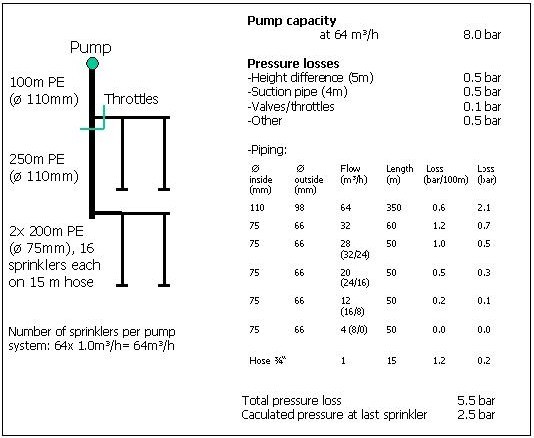
Fig. 1: Source Graf Kanitz, AFZ 5/1991, 245-247 (modified).
Dispersion
- Distributors, valves, and control panel should be located in a central place.
- Most sprinklers used will be full-circle sprinklers. For front surface irrigation, part-circle sprinklers with reversing mechanism can be used.
- If the timber is stored lot-wise, sector-wise control of the irrigation system is necessary.
- Timber stacks must be covered completely by the sprinklers (top and front surface, stack sides). Mind wind deviation! Overlapping sprinkler areas (triangular formation) provide for optimal cover (two rows per stack, sprinkler interval 12-14 m).
- Irrigation of front surfaces is essential!
Irrigating single stacks
If no facing, second stack can be used for front surface irrigation, a separate line has to be installed in front of the stack. Depending on the length of the timber, it might be sufficient to install only one line on top of the stack (see illustration below). The sprinklers can be mounted on wooden posts or iron rods (concreted into old car tires) which are placed in front of the stack face.
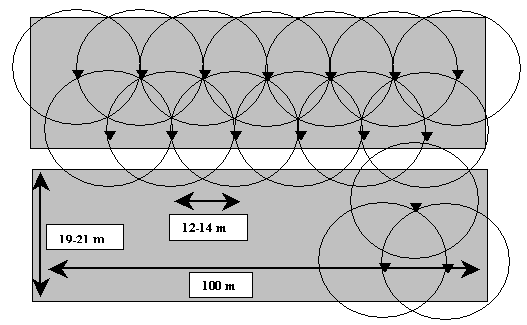
Fig. 2: Sprinkler alignment for two facing stacks. Source Willmann, R., Forestry Authority Freiburg.
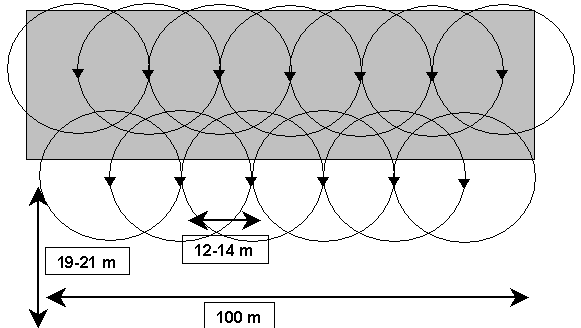
Fig. 3: Sprinkler alignment. Source Willmann, R., Forestry Authority Freiburg.
Pumps
- Suction pressure pumps are suitable. Underwater pumps can be used as well, but are prone to plugging and harder to clean. Hence they are rather suitable for ground water extraction or where a settling pond is used to clarify the water.
- It’s better to calculate the pump output generously if the definite amount of timber is not clear. Giving leeway for higher amounts can save costly retrofitting. Often, wet storage sites are planned too theoretically and have to be enlarged later. Rule of thumb: 1kw pump power per 1,000 cubic metres timber.
- Replacements and repair kits have to be provided for the case of system failure. Buying spare parts ahead is recommendable, especially backup pumps.
Controlling irrigation
- Sufficient and permanent wood moisture has to be provided for at any time. Up to 18 hours of irrigation are necessary in summer (8 – 10 hours in winter).
- Continuous irrigation is better than irrigation in intervals.
- Sufficient moisturisation of the timber is also important in winter. Due to the low relative air moisture the risk of desiccation is high.
- Irrigation has to commence as soon as possible after rolling in. It is even sensible to start irrigation during rolling in or stacking to ensure the bottom logs are moist enough from the beginning.
- Line- or sector-wise control of the system allows for an early start of irrigation.
- The timber should be irrigated continuously during the first 3 – 5 weeks to provide a basic moisture. After that, nightly irrigation can usually be set aside.
- An interval timer for periods of rolling in and out can prevent the system from being left switched off accidentally.
- The system should only be switched off during strong, steady rain over several hours. Never forget to reactivate the system! Therefore it is better to leave the system running in case of doubt.
Bill of material
| Tab. 4: Bill of material following "Waldschadenshandbuch", p. 12; BUWAL, Swiss confederate forestry commission, timber department (ed.), Bern, 1993, modified. |
| Item | Specification |
| Inlet piping | Polyethylene pipes, Ø 15 - 20 cm |
| Settling pond/sedimentation tank | Container or tank with separation chambers, possibly pit rings (cement), sand separator |
| Coarse filter | Grain size: 2 mm at intake, 1 mm at outlet |
| Screen/ filter basket | At the outlet of the sedimentation tank, preferably self-cleaning |
| Supply pipes for irrigation system | Metal, PE or fire hoses, Ø 8 - 12 cm |
| Pressure reducer | If difference in elevation between water body and storage site is 80 metres or more |
| Joints, couplings, junctions, end plugs | Brass or plastics |
| Water meter | Measuring flow rate (m3) |
| Manometer | Pressure control (bar) |
| Valves | Simple valves are sufficient. Safety valve: 8 bar |
| Piping on the stacks | Flexible PE- or fire hoses, Ø 6 cm |
| Piping to the sprinklers | PE- or rubber hoses, Ø 2,5 cm |
| Sprinkler | On flexible stand |
| Sprinkler | Maintenance-free circle or part-circle sprinklers, nozzle Ø (3,5) to 5 mm |
| Suction pipe | Flexible, longitudinal stiffened hose |
| Screen | With nonreturn valve, preferably self-cleaning(expensive!) |
| Pump | Sufficient output power (allow for power reserve), maintenance-free pumps with electric drive |
| Electric valves/timer | Clock timer with 2 – 3 control programmes |
Maintenance, inspections
- Right from the start, a member of staff (several people for large sites) should be seconded to supervise the wet storage site full time on a permanent basis.
- Avoid frequent changes in on-site staff.
- Extensive inspections of the storage are essential. The equipment has to be checked for operability every day and serviced regularly. Check:
- Operability of the sprinklers
- Water pressure
- Water flow rate
- Operability of the pumps
- Operability of the valves
- Piping
- Barriers
- The following should be clarified up front for potential system failure:
- Availability of backup pumps
- Potential to carry out repairs
- Feeding in water from other water bodies
- Emergency irrigation with the aid of the fire brigade (only for sites with a capacity of < 50,000 m³)
- Stock of wearing parts and spares (spare sprinklers, hoses, pipes, magnetic valves)
- Calculating costs for transportation to and from the storage site is part of a complete operating plan. Also include estimated transport capacities.
- People seem to take more care in running the site when the whole forest department is responsible for it. It’s even better to include future customers (or rather wood buyers) right from the start in conception and operation of the site.
| Possible problems | Remedy |
| Storage or irrigation capacity is too low – more timber than planned is coming in. | Plan new sites for more timber than is actually expected. Leave scope when calculating water demand. This makes increasing the capacity easier. |
| Interruption of irrigation during times of rolling in and out. | Install a time switch to prevent the system from being left switched off. |
| Unsuitable timber (low quality, insufficient grading) | Absolute quality control before putting timber in store, possibly measuring of wood moisture before putting in store. |
| Insufficient irrigation of front ends. | Installation of additional sprinklers. |
| Blockages of pumps, pipes, sprinklers caused by dirty water. | Installation of extraction sewers, filter baskets and (coarse) filters. Installation of a sedimentation tank. Daily inspection of the system. Flushing with clear water or blowing out with compressed air if necessary. |
| Ground becomes boggy due to insufficient drainage. Decreased load-bearing capacity of roads. | Building of a drainage system with drainage channels underneath the roads. Integrate coarse gravel in the base of the roads (allows water to leak through). |
Operational safety
Setup and running of the wet storage sites involves risk of accidents. It can’t be ruled out that trespassers enter the storage site. Signs which point out the risks should be put up. These should also include a liability disclaimer.
On-site staff will have to climb onto mossy, slippery stacks to ensure smooth operation of the site. The following points should be considered to make work on irrigated stacks as safe as possible.
- Staff have to be informed about the risks involved in their work and about how to avoid them.
- Install the irrigation system as maintenance-free as possible. Place sprinklers in a way so they’re easy to reach and can be serviced without danger of falling.
- The operator has to provide appropriate protective equipment. Due to high slip hazard, sturdy boots and crampons are required. Rain gear is also necessary.
- The organisational structure should make sure that staff attending the irrigation system leave a note containing location of work, how they are planning to get there and back, and estimated time of return. Where possible, work should be carried out in teams of two.
Other resources that can help make working on wet storage sites safer are:
- Shoulder or bum bag to carry tools and presumably needed spare parts.
- Walking stick with spike for extra support on the logs.
- Proper rain gear for working while the system is running.
- A ladder to climb the stacks (this should be an exceptional case).
- Planks to lay onto the stacks.
Forest Crises Management Advisory Guide
Back to the main page of the Forestry Crisis Management Advisor Guide: Overview of the different topic collections
Back to the article overview in the: Storm Topic Collection – Coping with Storm Damaged Timber

